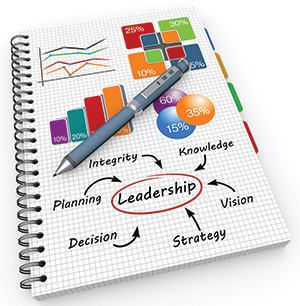BY DAVID HARTSON
 I have written many times about the importance of training and ongoing training meetings, and how holding frequent, productive meetings is essential to the health of any business. Holding regular meetings improves communication, allows for feedback and suggestions from your staff, and reduces the risk of errors that can frequently happen when just communicating via memos or email.
I have written many times about the importance of training and ongoing training meetings, and how holding frequent, productive meetings is essential to the health of any business. Holding regular meetings improves communication, allows for feedback and suggestions from your staff, and reduces the risk of errors that can frequently happen when just communicating via memos or email.
The fact of the matter is, it’s not always easy to hold regular meetings. Your company runs 24 hours a day, 7 days a week, and the largest portion of your staff—your chauffeurs—have an incredibly fragmented schedule. Regardless, meetings are still are vital part of your organization and should be held regularly. Here’s a few tips to get you started.
☑ Quality Over Quantity
Training sessions and meetings are important for updated safety information, new equipment training, office procedures, etc. Usually, we call updates a general “meeting,” but it is still training nonetheless, as well as an opportunity for you to see employees that you might not see on a daily basis.
These times spent around the table with your team are key drills in managing a business to success, making it ever more important to keep the sessions substantive while keeping your employees engaged. Understanding human retention of information can help you do this.
For example, many media studies have been done to see how long people pay attention to television, radio shows, and commercials. Radio and television commercials run 30-second spots because if the message is not said within the first five seconds, people will change the channel. Furthermore, most television viewers’ retention does not exceed 15 minutes, hence the 22-minute broadcast of most television shows. That is why the evening news will feature a quick tease of the weather and sports within the first few minutes, even though the complete details won’t be provided until the end of the half-hour.
This same concept applies to your meetings and training sessions. Keep the message clear and try not to exceed three discussion topics. Holding frequent meetings is better than one big long meeting.
☑ Think Modules
For most of you, your chauffeur training includes a day or two of classroom instruction, with additional hours outside in the vehicle. Some data suggest, however, that breaking it up into smaller segments will help to not only keep attention span and chauffeur trainees engaged, but will increase retention rates as well. Breaks become imperative during these types of training sessions, so make sure you build in several. With on-going training, keep the sessions at around 15 minutes. Not only will this help with your scheduling, but chauffeurs will appreciate that their time is valuable. In all cases, keep the information clear, simplified, and organized.

☑ Keep It Moving
Company meetings and training sessions can easily devolve into unproductive territory if the meeting manager doesn’t keep it moving. While you always want to encourage feedback and actively listen to employees, the conversation can go off-point unless it’s managed. It should be structured so that there is a limited time span for each part of the meeting, including the training or updates. To avoid the assembly becoming a complaint session, cap the discussion portion to a certain number of minutes. It may also help to have department heads speak with their staff beforehand to bring up areas of concern—but you don’t want only department heads to speak. Employee buy-in helps them to not only look forward to these meetings, but to feel valued by management.
☑ Find a Leader
Forget titles for a minute and select the right person who will not only deliver the information concisely and accurately, but who will also keep the meeting moving and all people engaged. In some cases, it might not be the owner, but the vice president or even a veteran chauffeur. Find someone who can keep the message on focus and push the objective while remaining enthusiastic and engaging to your employees. And in preparing for the meeting, one of many items to include is visual aids. Visual aids could be handouts, a PowerPoint slide show, a pass around item, or even food. Just be creative to keep the message engaging while meeting the gathering’s objectives.
☑ Record It
A good time to hold your meetings is payday. It’s interesting how employees tend to show up to work on time that day. Have a sign-in sheet that they attended the training and keep it in a file. If you covered issues on safety, then you could use that sign in sheet to comply with the Occupational Safety and Health Administration (OSHA), which requires that you have four meetings a year to discuss safety in the workplace.
☑ Test for Retention
There are several ways to judge how many of your employees truly paid attention in a meeting. The simplest way is to review anything that is required to be signed off on in paper and then review if that criteria has been met the next day. For example, if leftover food or trash around the office was an issue, and you required all employees to clean up after themselves, follow up by inspecting the work area to see if the message was understood. Other items like where to park vehicles and common vehicle repair procedures should be checked over the following week or so. Infractions can then become part of the person’s permanent record.
☑ Mix It Up
Time spent in a meeting room comes out of your pocket, so assess their payoff as you would any other investment. If they don’t make a change for you, it’s time to move onto a different approach. Some suggestions include changing up the day or time of the meeting, adding food or drink (or eliminating if it’s a problem), having employees come with ideas or solutions to a problem, or hosting it off-site.
Company training and meetings are sometimes hard to achieve because of a host of factors, but those companies that make it a priority find that it pays off. Improved communication, greater employee engagement, and better retention of important safety information are just some of the benefits that your company can enjoy. [CD02.14]

